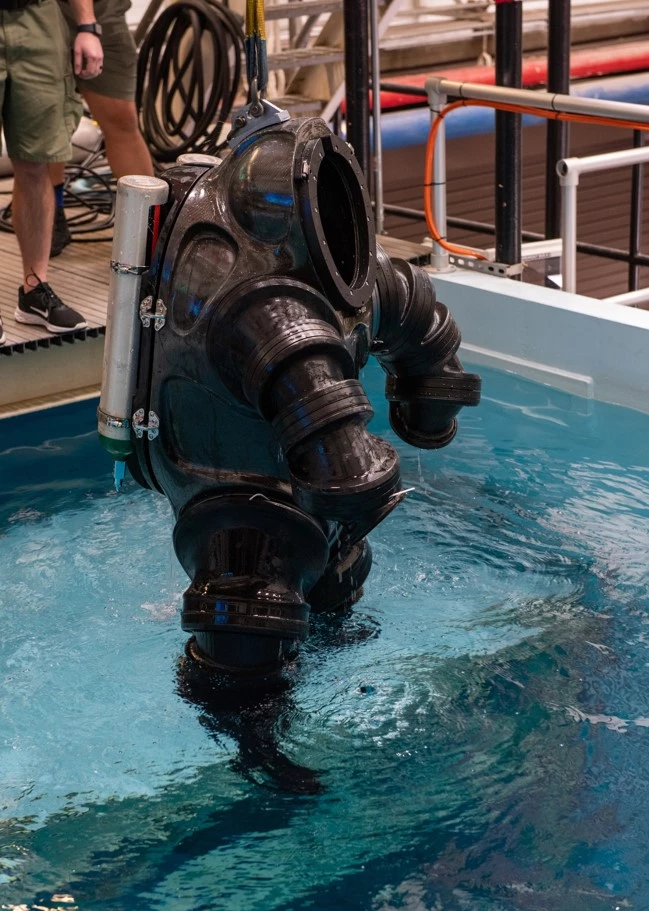The US Navy recently completed tank tests of a new deep-diving suit called the Deep Sea Expeditionary with No Decompression (DSEND) system that is light and flexible, yet maintains sea-level internal pressure around the wearer even when hundreds of feet underwater.
Modern scuba gear makes diving a fun and relatively safe sport, but deep sea diving is the equivalent to doing a space walk. Working under the crushing pressures hundreds of feet down requires complex apparatus and the choice between two challenging and expensive alternatives.
One option is to use a mixed-gas diving system where the nitrogen in the air is replaced with different mixtures of helium and hydrogen, with the percentage of oxygen kept within tolerable concentrations. It's a tricky operation that requires enormous amounts of the mixture gases that have to be supplied to the diver along with a constant flow of hot water through umbilical hoses to a special suit to keep the diver from freezing to death even in 'warm' water.
It also means that the diver has to be put under pressure in a special surface chamber on the host ship, transferred to the desired depth in a diving bell, returned to the surface chamber after completing work, kept under pressure for days or weeks at a time to finish the duty tour, and then take days more to decompress.
Not only is this extremely involved, it's also expensive – not just in terms of equipment and gases, but in dive pay, which, for a civilian diver, starts the clock from the moment of entering pressure to the moment of leaving. That's a lot of cash.

The alternative is to wear diving armor, which is a metal alloy suit that keeps the diver under normal sea-level pressure for the entire dive. Because the suit has to withstand, for example, over 18 atmospheres of pressure at 600 ft (183 m), it has to be very heavy with equally robust joints in the arms and legs and articulated claws where the hands should be. Such a contraption is so cumbersome that it is often equipped with electric thrusters to move about. It also requires a ship with heavy lifting gear and assist scuba divers to help the armor diver.
The DSEND project aims at avoiding both of these choices, at least at depths under 300 ft (92 m), with a light suit made of hard, durable material with its own internal life support system. This allows the diver to not only avoid the dangers of the bends and the need to return to the surface with decompression, but to also move much more easily underwater and even swim.
Developed in partnership with Naval Sea Systems Command (NAVSEA), Naval Undersea Warfare Center (NUWC), and Naval Surface Warfare Center (NSWC) Panama City, DSEND boasts joints, grippers, and hand attachments made from novel materials and can be adjusted to fit the diver. The joints are designed to more closely mimic human ones, making them much easier to move with less concentration and effort.
The recent tests were conducted at the NSWC Carderock Division in Maryland and at the Navy Experimental Diving Unit in Florida where it was used in simulated rescue and salvage operations of an imaginary downed aircraft with a mannequin standing in as a casualty.
"DSEND is truly a game-changer because it’s a self-contained environment that keeps internal pressure steady, as a diver descends to depths with increasing external pressure," said Dr. Sandra Chapman, a program officer in the Office of Naval Research's (ONR) Warfighter Performance Department. "It increases diver safety, allows them to expand the operational envelope and would eliminate lengthy decompression times."
DSEND is currently rated to 300 ft (91 m), though efforts are being made to improve upon this.
Source: Office of Naval Research





